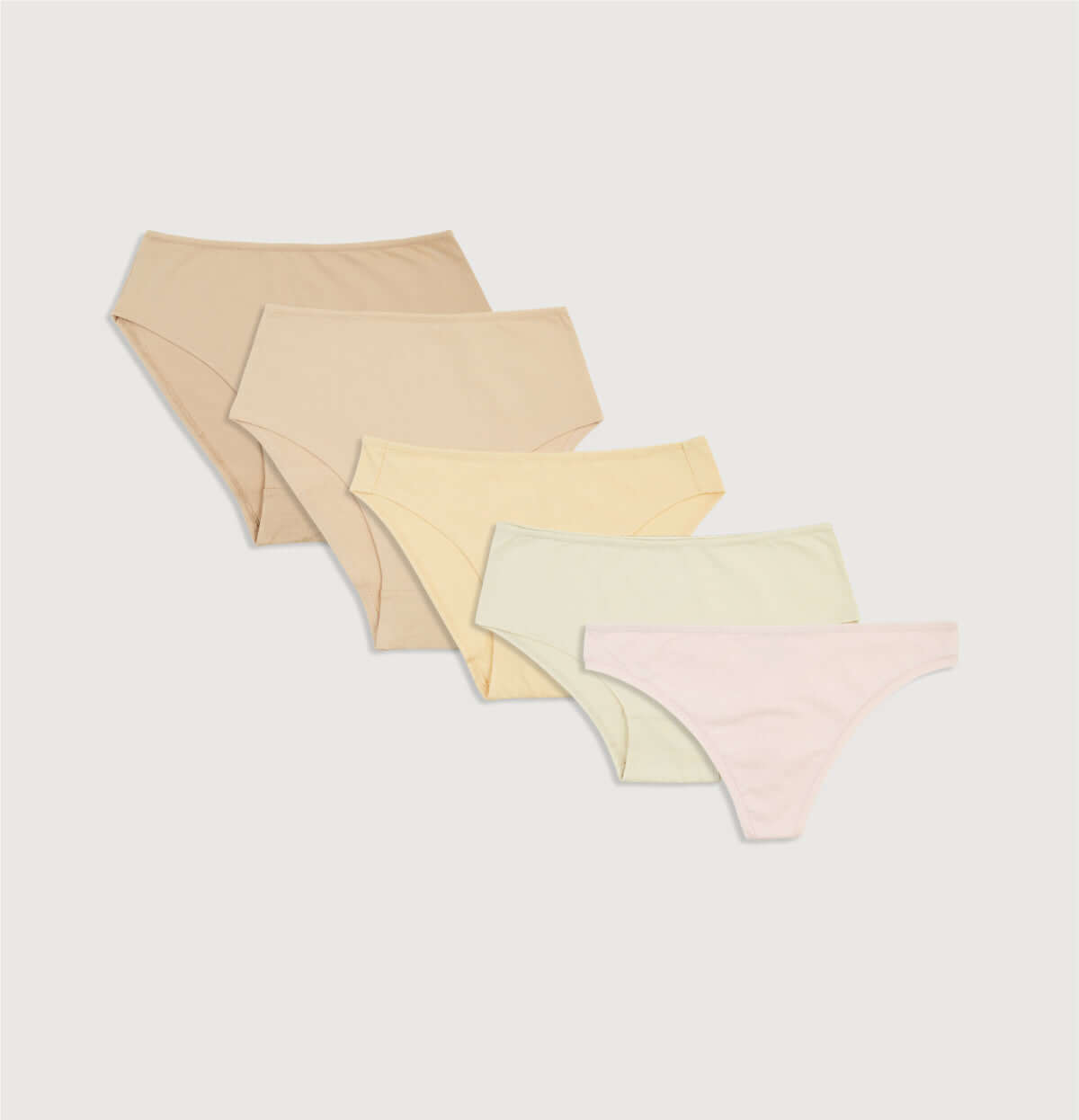The first and simplest thing you can do when thinking about your vaginal health is to take a moment to look at the label on your underwear.
Synthetic materials like nylon, Lycra, polyester, and spandex don't allow the area to breathe. Instead, they trap heat and moisture, creating the perfect breeding ground for a variety of health problems like vaginal burning, vaginal yeast infection, skin irritation, and more. That doesn't mean you'll definitely get an infection if you wear underwear made from these materials. But there are more breathable fabrics that will make your vagina much, much happier and reduce your risk.
So what material should underwear be made of?
The most important thing is to choose natural fabrics - especially organic cotton . Today, with all the styles and variety of fabrics out there, it's worth reiterating: cotton in general, and organic in particular, is the best fabric for underwear. The vulva is a very sensitive and delicate area, much like the lips on your face. You want to treat it gently. Organic cotton is the best choice when it comes to everyday wear and especially for underwear , especially if you have sensitive skin or have dealt with repeated and persistent infections or irritations. It is the most absorbent and best material for promoting breathability, and it does not contain chemicals. More on the differences between regular cotton and organic cotton .
It's important to change your underwear every day, sometimes even more than once!
Some doctors say that you can wear the same pair of underwear for two days in a row if there is not a lot of discharge or sweat. But if you start to feel uncomfortable due to the accumulation of vaginal discharge , you can change more than once a day. Many women are bothered by moisture and vaginal discharge and wear a panty liner all the time. Today, doctors claim that this is not the healthiest behavior, as panty liners can cause chafing and irritation. Organic cotton underwear will solve this problem because cotton absorbs moisture and also as the body gets used to going without a panty liner, over time, there will be less discharge.
Consider changing your underwear every year.
Yes, that may sound a bit excessive, especially for something that gets washed regularly. But even clean underwear can have up to 10,000 live bacteria. That's because there are bacteria in washing machine water—about a million bacteria in just 2 tablespoons of used water! Beyond bacteria, there's a chance your underwear could contain feces. Throwing away your underwear every year isn't the most environmentally friendly option, but there's an added benefit to organic cotton that its growing process is eco-friendly and its fabric is recyclable. If you don't have a bacterial problem down there, you may not need to clean your drawers every year (but it's totally recommended).
The best workout underwear
First of all, underwear that wicks moisture well, and it's important that they are the right size. Should you wear underwear while exercising or not? It's a personal preference. If you're wearing shorts that have built-in moisture-wicking underwear, you can forgo underwear. Most women will wear underwear under their sports pants (which are usually made of polyester, nylon, Lycra, etc.), which will probably be more comfortable and an even healthier way to absorb sweat.
Sleep without underwear.
There's a lot of debate about whether or not to go to bed with underwear on. For those with healthy vaginas, either option is fine. For those dealing with vaginal infections and yeast infections, going to bed without underwear can make all the difference. It allows the area to breathe at night and prevents moisture from building up or creating a breeding ground for bacteria. If you really don't like the feeling of being naked, you can wear loose pajama pants. Just remember, if you go without underwear but wear another type of loose-fitting pants, they need to be washed more often, and again, they should be made of organic cotton .






